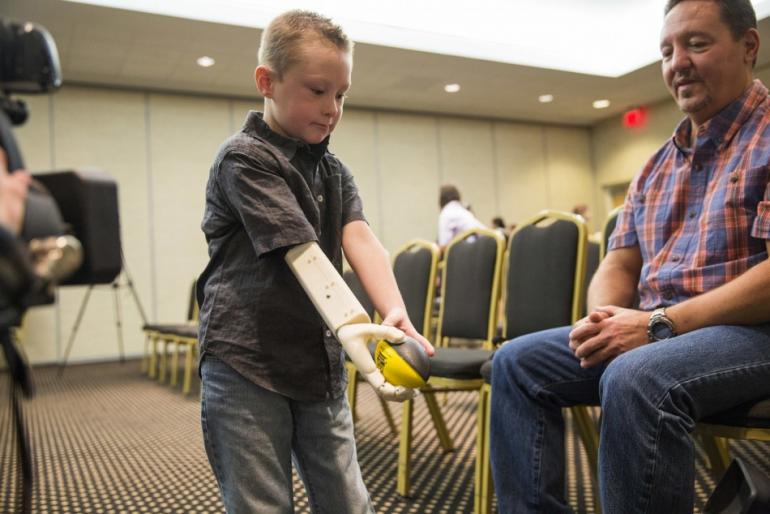-
Tips for becoming a good boxer - November 6, 2020
-
7 expert tips for making your hens night a memorable one - November 6, 2020
-
5 reasons to host your Christmas party on a cruise boat - November 6, 2020
-
What to do when you’re charged with a crime - November 6, 2020
-
Should you get one or multiple dogs? Here’s all you need to know - November 3, 2020
-
A Guide: How to Build Your Very Own Magic Mirror - February 14, 2019
-
Our Top Inspirational Baseball Stars - November 24, 2018
-
Five Tech Tools That Will Help You Turn Your Blog into a Business - November 24, 2018
-
How to Indulge on Vacation without Expanding Your Waist - November 9, 2018
-
5 Strategies for Businesses to Appeal to Today’s Increasingly Mobile-Crazed Customers - November 9, 2018
The first artificial skin with the sense of touch
The findings are the result of 5-year-long research on how to use plastics as pressure sensors. The ultimate goal, the university said, is to create an electronic fabric that could be place over a prosthetic limb and simulate the sensory functions of actual human skin.
Advertisement
Still, it’s a promising step in the quest to make prosthetic limbs more real.
It’s just another step toward her goal of replicating an aspect of touch that enables a person to distinguish the pressure difference between a limp handshake and a firm grip. “We can engineer plastic materials so they have the ability to respond to pressure or external force, but we also can engineer them to be stretchable, or biocompatible, and maybe even self-healing”. The bottom layer contains numerous circuits that interpret the received information and send signals to the brain.
Bao’s group started by refining sensors that they first made 5 years ago.
In order to do this, researchers placed carbon nanotubes within the material.
The nerve endings in human skin are very sophisticated, low-power circuits that turn physical pressure on the skin into a digital signal in the brain. These pulses are similar to Morse code. Squeezing the material brings the rods closer together, creating more rapid pulses as the pressure increases. Adding a sense of touch could make controlling prosthetic limbs easier and more natural – but that’s a challenge for engineers.
For this project, team members worked with researchers from PARC, a Xerox company, which has a technology that uses an inkjet printer to deposit flexible circuits onto plastic.
Bao’s team has been developing flexible electronics that can bend without breaking. In this technique, cells are bioengineered so that they become sensitive to certain light frequencies.
This light-based technique is referred to as “optogenetics” and is used by neuroscientists for all sorts of experiments, including manipulating memories by driving activity in specific sets of neurons. The electric pulses from the device were translated into light, and the signal was sent to the little rodent brains. This demonstrated that the artificial skin was capable of generating a sensory output that was compatible with nerve cells. Using the new optogenetic proteins, the neurons were able to sustain longer intervals of stimulation, suggesting that the system could also work with other fast-firing neurons, including peripheral nerves. The team has already shown that direct stimulation of neurons with electrical pulses is possible. The human hand has six types of biological sensing mechanism, and pressure is just one of them.
Zhenan Bao, the lead author of the current study, has spent more than a decade trying to understand the mechanisms of human sensations.
Two layers are involved.
Although the material used for the digital skin is made of plastic, Bao said it looks and works like a real skin. “I now see a clear path where we can take our artificial skin”.
Advertisement
Science Magazine has published the findings of the researchers as well as a brief summary of how they were able to achieve the feat.




























